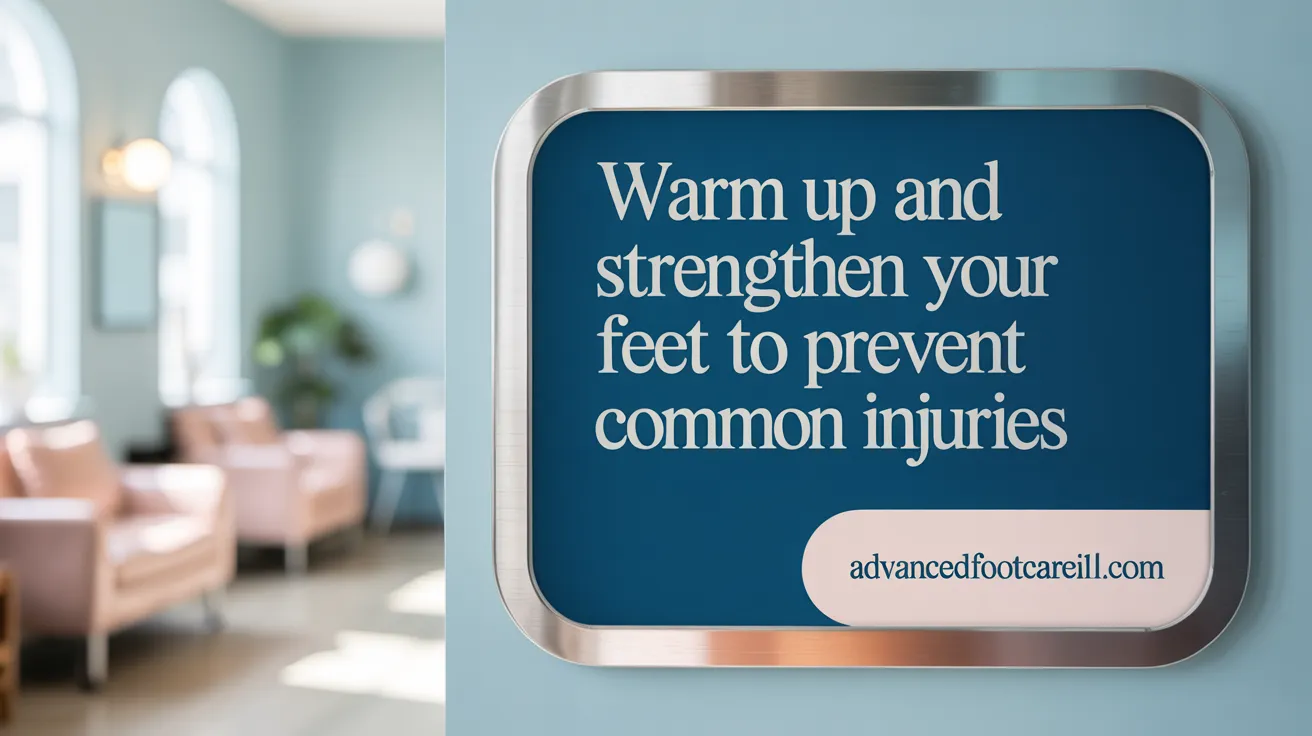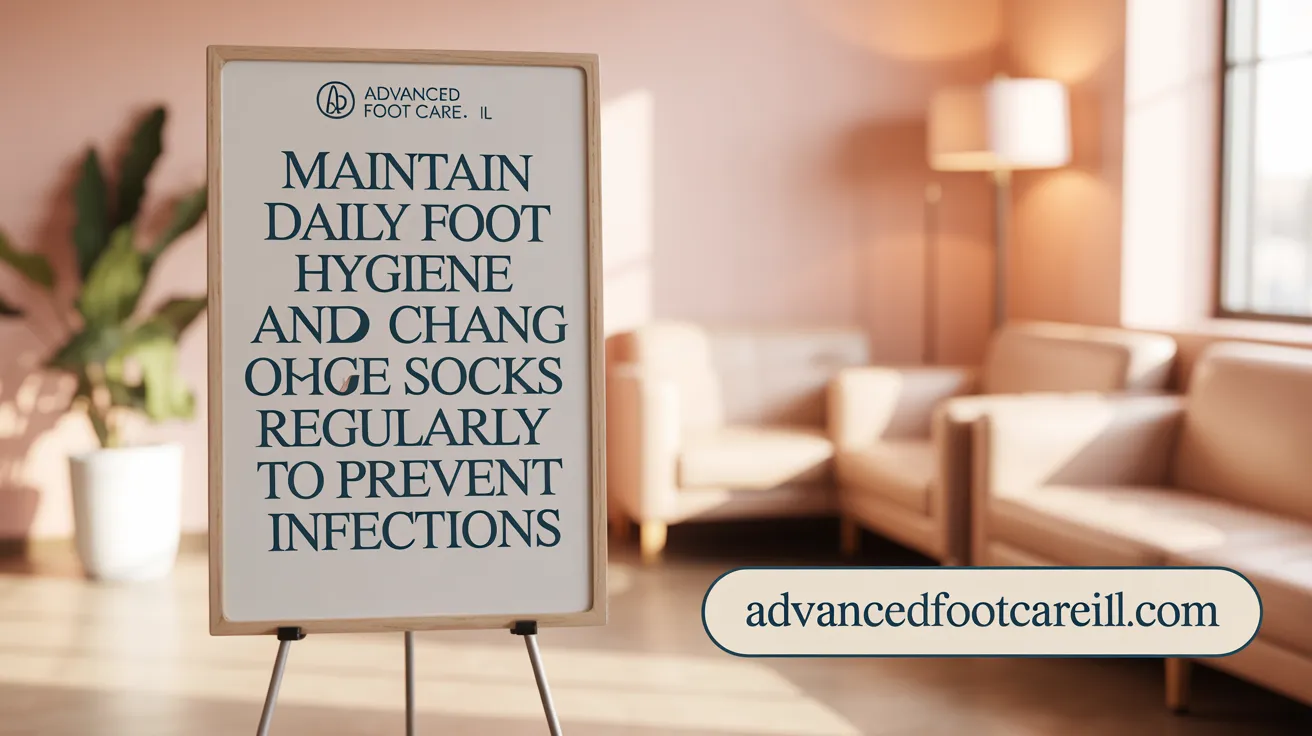The Importance of Foot Health in Sports
Athletes put tremendous strain on their feet and ankles, making them particularly vulnerable to injuries and other problems. Understanding how to prevent these common foot issues not only enhances performance but also ensures longevity in sports careers. This article offers expert advice on maintaining foot health, covering footwear, hygiene, injury prevention, and recovery strategies essential for athletes at all levels.
Choosing the Right Footwear for Sport-Specific Needs

Selecting Appropriate Shoes for Different Sports
Each sport demands specific features in footwear to accommodate the unique movements and stresses involved. Running shoes , for instance, are designed with cushioning to absorb impact, while court shoes offer lateral stability for quick side-to-side movements. Using shoes built specifically for your sport helps protect against common injuries such as blisters, plantar fasciitis, and stress fractures. For more details, see Proper footwear for athletes and sport-specific footwear.
Ensuring Proper Fit and Shoe Replacement
Proper shoe fit is vital; shoes should provide enough room in the toe box and solid arch support without being too tight. It is advisable to get professionally fitted at specialty stores to match your foot shape and sport requirements. Wear and tear reduce a shoe’s protective qualities, so replacing running shoes every 300 to 500 miles or as soon as signs of wear appear is essential to maintain optimal injury prevention. For guidance, check Proper shoe fit and shoe replacement guidance.
Role of Orthotics in Foot Support
Orthotics, whether custom-made by a podiatrist or over-the-counter inserts, can address individual biomechanical issues such as flat feet or overpronation. These inserts enhance foot alignment and stability, reducing strain on muscles and joints and helping to prevent overuse injuries. Consulting a foot care professional ensures orthotics are properly selected and fitted. Learn more about Using orthotics for support and injury prevention.
What is the role of footwear in preventing foot injuries in athletes?
Wearing sport-specific shoes that provide proper support, cushioning, and stability is crucial to preventing foot injuries like blisters, stress fractures, and tendonitis. Shoes need to fit well, allowing adequate toe box room and arch support, and should be replaced regularly to maintain their protective qualities. Orthotics contribute additional support for specific foot conditions, further reducing injury risk. For comprehensive advice, see Footwear for injury prevention and athlete foot care tips.
Effective Warm-up, Strengthening, and Conditioning Techniques

How can athletes prevent common foot injuries through exercise and warm-up routines?
Warming up before any physical activity is essential for preparing the feet, ankles, calves, and Achilles tendons. Effective warm-up exercises consist of stretching these areas and light jogging to increase blood flow and improve joint mobility. This preparation reduces the risk of strains, sprains, and other foot injuries. For detailed warm-up tips and foot and ankle stretching, see Preventing foot and ankle injuries and Preventing foot injuries: tips for athletes and everyday people.
Strengthening exercises play a vital role in supporting the foot’s muscles and improving stability. Toe raises, foot flexes, ankle rotations, and balance drills help build muscle strength and neuromuscular control. These exercises contribute to better foot function during sports, lowering the chances of common injuries such as ankle sprains and plantar fasciitis. For exercise suggestions, see Footcare for athletes: Prevent injuries & boost performance and Preventing common foot and ankle injuries.
Gradual progression in training is equally important. Athletes should increase the intensity and duration of activities step-by-step, allowing the feet and ankles to adapt safely. Sudden spikes in training can lead to overuse injuries like stress fractures or Achilles tendinitis. Guidance on training progression and avoiding overuse injuries is available at Preventing Foot Injuries and Sports-related foot injuries.
In summary, combining thorough warm-up routines, regular foot and ankle strengthening exercises, and careful training progression creates a strong foundation for preventing foot injuries and enhancing athletic performance. Additional comprehensive tips can be found at Tips for athletes on foot care.
Maintaining Good Foot Hygiene to Prevent Infections

Daily washing and thorough drying of feet
Maintaining clean feet is a fundamental step for preventing athlete's foot and other fungal infections. Athletes and active individuals should wash their feet daily, paying special attention to drying between the toes where moisture tends to linger and create a breeding ground for fungi.
Changing socks regularly
Sock hygiene plays a vital role in foot health. Changing socks daily, or more often when feet sweat heavily, helps keep feet dry and limits fungal growth. Opting for moisture-wicking socks made of materials like bamboo, acrylic, or merino wool further prevents excessive moisture.
Preventing athlete's foot and fungal infections
Athlete's foot commonly occurs in warm, moist environments such as locker rooms, swimming pools, and shared showers. To reduce risk, avoid walking barefoot in these public areas and wear protective footwear such as flip-flops or sandals. Allow shoes to air out thoroughly between uses, ideally for 24-48 hours, to reduce internal humidity. Applying antifungal powders in damp-prone areas—between toes, under toes, inside shoes—can help inhibit fungal growth.
What hygiene practices help prevent fungal infections in athletes?
Good foot hygiene is essential for fungal infection prevention. Daily washing and thorough drying, especially between toes, combined with regular sock changes are foundational practices. Using moisture-wicking socks, rotating shoes to let them dry out, and applying antifungal powders target moisture control. Avoiding barefoot walking in damp communal areas like gym floors or showers also significantly reduces the chance of contracting athlete's foot.
Recognizing Injuries Early and Knowing When to Seek Medical Attention
Warning signs of foot injuries
Athletes should be vigilant for persistent pain, swelling, bruising, numbness, tingling, changes in foot color, and any difficulty walking. These symptoms often indicate the need for professional evaluation to avoid progression of injuries. See more on Recognizing foot injury signs.
Importance of prompt evaluation
Early medical assessment is crucial to prevent minor foot problems from becoming severe. Prompt diagnosis allows for appropriate treatments such as rest, orthotics, or physical therapy, reducing the risk of chronic issues and facilitating quicker recovery. Learn about Foot injury treatment plans and Foot injury recovery support.
Consulting qualified foot specialists
Seeking care from a credentialed podiatrist or foot injury doctor is important for specialized treatment. Selecting a well-reviewed professional close to home helps ensure timely access to care and enhances treatment effectiveness. Recommendations, credentials, and clinic environment should be considered when choosing a specialist. For guidance, see Finding a qualified foot specialist and Foot doctor recommendations.
Recognizing these signs early and obtaining expert care supports athletes in maintaining foot health and continuing their activities safely. For expert care, consider Podiatry Group of South Texas – Expert foot and ankle care.
Additional Preventive Measures and Recovery Strategies
What other strategies can athletes use to maintain healthy feet and prevent injuries?
Athletes with a history of ankle injuries should consider using braces or tape to provide extra support and reduce the likelihood of recurring sprains. These preventive tools help stabilize weak ligaments during high-impact or rapid movements.
Incorporating cross-training activities such as swimming or cycling into workout routines allows athletes to maintain fitness while minimizing repetitive stress on the feet. Rest periods are equally important to allow healing and prevent overuse injuries.
Proper toenail care is crucial in injury prevention. Cutting nails straight across helps avoid painful ingrown toenails, which can cause infection and limit activity.
Post-activity recovery is vital for foot health. Techniques like icing swollen areas, massaging feet to improve circulation, or gently rolling the foot over a small ball can help reduce inflammation and muscle tightness.
Nutrition and hydration play a pivotal role in foot health and injury prevention. Adequate intake of calcium, vitamin D, iron, and fluids supports bone strength and tissue repair, enhancing recovery and reducing future injury risk.
Prioritize Your Foot Health for Athletic Success
Maintaining foot health is fundamental for athletes to perform optimally and avoid setbacks caused by injuries. By choosing appropriate footwear, engaging in proper warm-up and strengthening routines, practicing good foot hygiene, recognizing early signs of trouble, and adopting supportive recovery measures, athletes can safeguard their feet against common problems. Consulting specialized healthcare professionals when issues arise further supports long-term foot wellness and athletic longevity.
